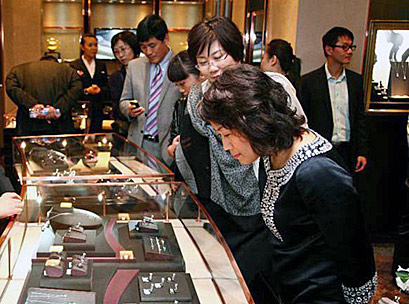A divergence of taste and buying behaviour is emerging in the global luxury retail sector according to a study by Bain & Company.
The study concludes that changing generational shifts and unprecedented fragmentation are behind the rise of seven new faces of the luxury consumer.
“Luxury brands must understand the full range of heterogeneous luxury consumer segmentations, execute relentlessly on reaching the segments that have the highest potential, and invest in capturing the attention and imagination of new potential shoppers who could be buying luxury today but who aren’t, while understanding how to delight and truly engage their current consumer base,” said Bain partner Claudia D’Arpizio.
Bain defines the seven groups thus:
- The Omnivore
These shoppers are typically new entrants to luxury. On average, they are younger than the other clusters and have a high willingness to experiment with products and brands. They are primarily women. They tend to purchase high ticket items, focusing on the jewellery and watch categories. They prefer to shop in brands’ own stores. Many of their purchases are made while travelling. They prefer aspirational brands, and while they have high advocacy for luxury brands, their loyalty level is relatively low. These attitudes are common among Chinese consumers from second-tier and third-tier cities. - The Opinionated
These are highly educated generation X and Y shoppers. They favour leather goods and watches and are highly aware of the differences between brands. They shop often within their hometowns, and are influenced by online information and social networks. They dominate China’s first-tier cities. - The Investor
These shoppers pay the greatest attention to the quality and durability of luxury materials. They favour long-lasting leather goods and watches which can be handed down from generation to generation. They carefully evaluate luxury purchases with research and referrals from other consumers. - The Hedonist
These shoppers are infatuated with luxury goods and the luxury shopping experience. They have a high affinity for brand logos and much of their purchasing is within accessories categories. They are most influenced by advertising. Despite their interest in luxury for show, they exhibit the lowest levels of advocacy for brands, often due to cognitive dissonance sometimes following purchase. - The Conservative
These are mature and mainstream shoppers, both men and women. They favour watches and jewellery from big-name brands. They shop in multi-brand stores, and are influenced primarily by what friends and family recommend. They are mainly in mature markets, but also in China. - The Disillusioned
These are mostly baby boomer shoppers who suffer from “luxury fatigue.” They purchase leather goods and beauty products. They look for products that last more than one season, but are unswayed by brand messaging or advertising. They tend to shop infrequently, and like shopping online when they can. The segment is dominated by women. - The Wannabe
These predominantly female shoppers look for entry-level items in beauty and shoes, valuing affordability, and are highly likely to mix and match outside of the luxury spectrum. They are impulse shoppers who demonstrate little brand loyalty, primarily influenced by what their friends say and what they see in fashion publications.






